



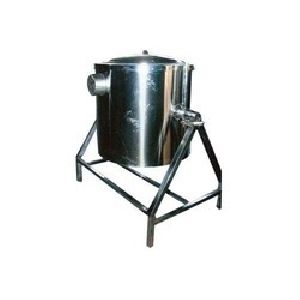
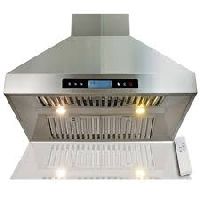
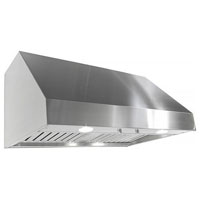
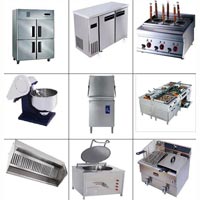

Popcorn
Get Price Quote
Based in Karnataka, the company is known as a pioneering Manufacturer and Supplier of Popcorn. Early Popcorn History Biblical accounts of "corn" stored in the pyramids of Egypt are misunderstood. The "corn" from the bible was probably barley. The mistake comes from a changed use of the word "corn," which used to signify the most-used grain of a specific place. In England, "corn" was wheat, and in Scotland and Ireland the word referred to oats. Since maize was the common American "corn," it took that name -- and keeps it today. It is believed that the first use of wild and early cultivated corn was popping. The oldest ears of popcorn ever found were discovered in the Bat Cave of west central New Mexico in 1948 and 1950. Ranging from smaller than a penny to about 2 inches, the oldest Bat Cave ears are about 4,000 years old. Popcorn was integral to early 16th century Aztec Indian ceremonies. Bernardino de Sahagun writes: "And also a number of young women danced, having so vowed, a popcorn dance. As thick as tassels of maize were their popcorn garlands. And these they placed upon (the girls') heads." In 1519, Cortes got his first sight of popcorn when he invaded Mexico and came into contact with the Aztecs. Popcorn was an important food for the Aztec Indians, who also used popcorn as decoration for ceremonial headdresses, necklaces and ornaments on statues of their gods, including Tlaloc, the god of rain and fertility. An early Spanish account of a ceremony honoring the Aztec gods who watched over fishermen reads: "They scattered before him parched corn, called momochitl, a kind of corn which bursts when parched and discloses its contents and makes itself look like a very white flower; they said these were hailstones given to the god of water." Writing of Peruvian Indians in 1650, the Spaniard Cobo says, "They toast a certain kind of corn until it bursts. They call it pisancalla, and they use it as a confection." The use of the moldboard plow became commonplace in the mid-1800s and led to the widespread planting of maize in the United States. Recent Popcorn History Popcorn was very popular from the 1890s until the Great Depression. Street vendors used to follow crowds around, pushing steam or gas-powered poppers through fairs, parks and expositions. During the Depression, popcorn at 5 or 10 cents a bag was one of the few luxuries down-and-out families could afford. While other businesses failed, the popcorn business thrived. An Oklahoma banker who went broke when his bank failed bought a popcorn machine and started a business in a small store near a theater. After a couple years, his popcorn business made enough money to buy back three of the farms he'd lost. During World War II, sugar was sent overseas for U.S. troops, which meant there wasn't much sugar left in the States to make candy. Thanks to this unusual situation, Americans ate three times as much popcorn as usual. Popcorn went into a slump during the early 1950s, when television became popular. Attendance at movie theaters dropped and, with it, popcorn consumption. When the public began eating popcorn at home, the new relationship between television and popcorn led to a resurge in popularity. Microwave popcorn -- the very first use of microwave heating in the 1940s -- has already accounted for $240 million in annual U.S. popcorn sales in the 1990s. Americans today consume 16 billion quarts of popped popcorn each year. The average American eats about 51 quarts. History of Popcorn Poppers One of the ancient ways to pop corn was to heat sand in a fire and stir kernels of popcorn in when the sand was fully heated. Exploring Paraguay during the 18th century, Felix de Azara told of a kind of popcorn with kernels on the tassel which, when "it is boiled in fat or oil, the grains burst without becoming detached, and there results a superb bouquet fit to adorn a lady's hair at night without anyone knowing what it was. I have often eaten these burst grains and found them very good." Charles Cretors, founder of C. Cretors and Company in Chicago, introduced the world's first mobile popcorn machine at the World's Columbian Exposition in Chicago in 1893. Scientific American reported: "This machine...was designed with the idea of moving it about to any location where the operator would be likely to do a good businesss. The apparatus, which is light and strong, and weighing but 400 or 500 pounds, can be drawn readily by a boy or by a small pony to any picnic ground, fair, political rally, etc. and to many other places where a good business could be done for a day or two." Percy Spencer, Raytheon Manufacturing Corporation, figured out how to mass produce magnetrons which were being used to generate microwaves for use in World War II. Looking for post-war applications of Raytheon technology, Spencer spurred the development of the microwave oven. Popcorn was key to many of Spencer's experiments. Fun Popcorn FactsCorny Facts Americans consume some 16 billion quarts of this whole grain, good-for-you treat. That’s 51 quarts per man, woman, and child. Compared to most snack foods, popcorn is low in calories. Air-popped popcorn has only 31 calories per cup. Oil-popped is only 55 per cup. Popcorn is a type of maize (or corn), a member of the grass family, and is scientifically known as Zea mays everta. Of the 6 types of maize/corn—pod, sweet, flour, dent, flint, and popcorn—only popcorn pops. Popcorn is a whole grain. It is made up of three components: the germ, endosperm, and pericarp (also know as the hull). Popcorn needs between 13.5-14% moisture to pop. Popcorn differs from other types of maize/corn in that is has a thicker pericarp/hull. The hull allows pressure from the heated water to build and eventually bursts open. The inside starch becomes gelatinous while being heated; when the hull bursts, the gelatinized starch spills out and cools, giving it its familiar popcorn shape. Most U.S. popcorn is grown in the Midwest, primarily in Indiana, Nebraska, Ohio, Illinois, Iowa, Kentucky and Missouri. Many people believe the acres of corn they see in the Midwest during growing season could be picked and eaten for dinner, or dried and popped. In fact, those acres are typically field corn, which is used largely for livestock feed, and differs from both sweet corn and popcorn. The peak period for popcorn sales for home consumption is in the fall. Most popcorn comes in two basic shapes when it's popped: snowflake and mushroom. Snowflake is used in movie theaters and ballparks because it looks and pops bigger. Mushroom is used for candy confections because it doesn't crumble. Popping popcorn is one of the number one uses for microwave ovens. Most microwave ovens have a "popcorn" control button. "Popability" is popcorn lingo that refers to the percentage of kernels that pop. There is no such thing as “hull-less” popcorn. All popcorn needs a hull in order to pop. Some varieties of popcorn have been bred so the hull shatters upon popping, making it appear to be hull-less. How high popcorn kernels can pop? Up to 3 feet in the air. The world’s largest popcorn ball was created by volunteers in Sac City, Iowa in February, 2009. It weighed 5,000 lbs., stood over 8 ft. tall, and measured 28.8 ft. in circumference. If you made a trail of popcorn from New York City to Los Angeles, you would need more than 352,028,160 popped kernels!

towel warmer
8,500 Per Piece
Best Deals from Fast Food Equipment

Facial Steamer Machine
Get Price Quote
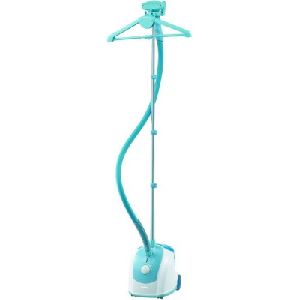
Thermostat Controlled Garment Steamer
Get Price Quote
A stylish garment steamer, the NOVA GS 281 is a revolutionary home appliance ideal for all your garments, including curtains and upholstery.The GS 281 garment steamer is compactly designed and comes with an ergonomic handle. It is capable of a powerful steam output which gently yet effectively removes wrinkles and creases.Extremely gentle on all fabrics, this easy-to use NOVA steam iron is ready in 2 minutes to perfectly iron your clothes. It comes with an attachment to get the perfect creases. Apart from ironing, this garment steamer gets rid of odors and sanitizes your clothes.The integrated cord gives you enough freedom to move around for comfortably ironing. The compact design of the iron makes it easy to store it anywhere without taking much space. There is no risk of burning your fabrics with this steam iron.